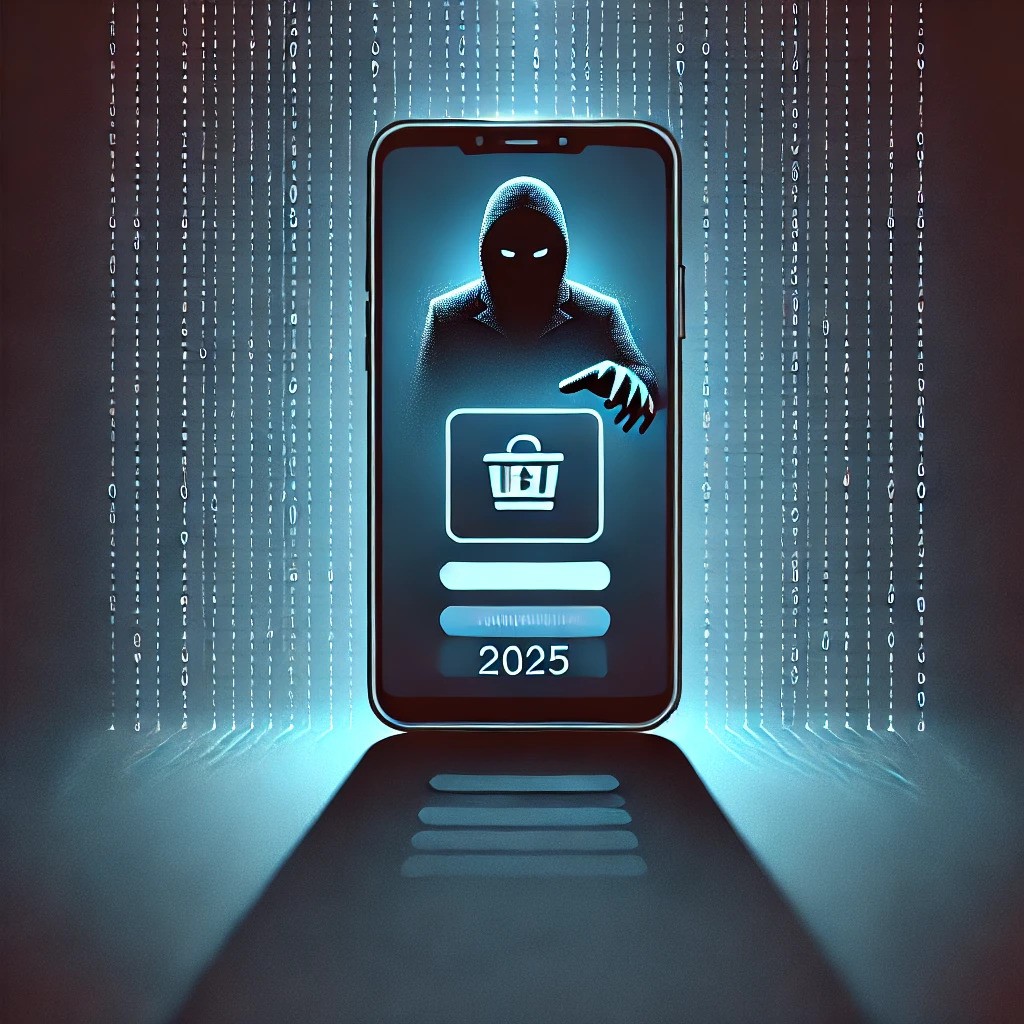Your OTP is Your Money: A 2025 Guide to Outsmarting Digital Banking Scammers
In an era where our smartphones have become our primary banking terminals, the rise in digital banking scams has reached alarming proportions. Picture this: You’re comfortably seated at home, scrolling through social media, when an innocent-looking job advertisement catches your eye. Before you know it, you’ve fallen victim to a sophisticated banking scam that could drain your life savings in minutes. This isn’t just a hypothetical scenario – it’s the reality facing thousands of Indians every day.
The Rising Tide of Digital Banking Fraud: A Wake-Up Call
The latest statistics from the Reserve Bank of India paint a concerning picture. In just six months of 2024 (April to September), a staggering 18,461 fraud cases were reported, with criminals making away with Rs 21,367 crore. To put this in perspective, that’s an eight-fold increase in the amount stolen compared to the same period last year, which saw 14,480 cases totaling Rs 2,623 crore.
Real Stories, Real Victims: Learning from Others’ Experiences
Take the case of Bhavna (name changed), a young professional whose story mirrors countless others across the country. “I never thought I could fall for a scam,” she recalls, her voice tinged with regret. “The job posting looked so legitimate, and the process seemed normal until it was too late.” Bhavna’s experience with a fake work-from-home scheme led to unauthorized transactions and a blocked digital wallet account – a harsh lesson in the importance of digital vigilance.
- Your OTP is Your Money: A 2025 Guide to Outsmarting Digital Banking Scammers
- Frequently Asked Questions: Digital Banking Security and OTP Scams
Understanding Modern Banking Scams: The Fraudster’s Playbook
The Evolution of Financial Fraud
Today’s banking scams are far more sophisticated than the notorious “Nigerian Prince” emails of yesteryear. Tushar Sharma, a cybersecurity expert and co-founder of The Organisation For Enlightening and Education (TOFEE) in New Delhi, explains: “Modern fraudsters are like chameleons – they adapt their tactics constantly, using cutting-edge technology and psychology to exploit both human and technical vulnerabilities.”
The Most Dangerous Banking Scams of 2025
1. Synthetic Identity Fraud: The Ghost Borrower
Imagine a criminal creating a person who doesn’t exist, using a mix of real and fake information. These “synthetic identities” are increasingly being used to secure loans and open accounts, with artificial intelligence making these fake identities more convincing than ever.
2. Advanced Phishing Operations
Modern phishing has evolved beyond poorly written emails. Today’s scammers craft perfectly replicated bank websites and communications, making it increasingly difficult to distinguish legitimate from fraudulent content.
3. Mobile Banking Exploitation
As more people use mobile banking apps, criminals have developed sophisticated methods to hijack phone numbers and bypass security measures, including two-factor authentication.
4. Smart ATM Skimming
The latest ATM scams use Internet of Things (IoT) devices so sophisticated that they’re virtually undetectable to the naked eye, capable of stealing card data without leaving a trace.

Your Complete Defense Strategy: Protecting Your Financial Future
Essential Security Measures for Every Digital Banking User
- Verify Before You Trust
- Always double-check official government schemes on authorized websites
- Remember: legitimate authorities never demand immediate payments or sensitive details via calls
- Regular Security Checks
- Monitor your bank statements like a hawk
- Set up transaction alerts for real-time monitoring
- Review your CIBIL score quarterly for unauthorized loans
- Digital Hygiene Practices
- Use unique, complex passwords for each financial account
- Enable two-factor authentication wherever possible
- Keep your banking apps and devices updated
Emergency Response: What to Do If You’ve Been Scammed
Time is of the essence when you suspect fraud. Follow this immediate action plan:
- Immediate Steps (First 24 Hours)
- Cease all communication with suspected scammers
- Contact your bank’s fraud department
- Document everything: screenshots, messages, and call records
- Recovery Phase
- File a detailed complaint on cybercrime.gov.in
- Monitor your accounts for any suspicious activity
- Work with your bank to dispute unauthorized charges
The Future of Digital Banking Security
As we move further into 2025, the battle between security experts and fraudsters continues to evolve. Banks are implementing AI-driven fraud detection systems, but the human element remains crucial. “The most effective defense is an informed customer,” says Manish Agrawal, senior executive vice president at HDFC Bank. “All the technology in the world can’t protect someone who willingly shares their OTP with a scammer.”
Protecting Your Digital Financial Future
Remember, digital banking isn’t inherently dangerous – it’s how we use it that matters. By staying informed, practicing good security habits, and maintaining healthy skepticism, you can enjoy the convenience of digital banking while keeping your money safe from fraudsters.
Key Resources for Banking Safety
- National Cyber Crime Reporting Portal: cybercrime.gov.in
- Banking Fraud Reporting: 1930
- Suspicious Communication Reporting: sancharsaathi.gov.in
Frequently Asked Questions: Digital Banking Security and OTP Scams
Basic OTP Security
Q: What exactly is an OTP and why is it so important? A: An OTP (One-Time Password) is a unique code sent to your phone that acts as a digital signature for banking transactions. It’s crucial because it’s the final security barrier between your money and potential scammers. Think of it as the key to your digital bank vault – once shared, scammers can instantly access your funds.
Q: Can someone hack my bank account with just my OTP? A: Yes, if scammers have already obtained your basic banking details, an OTP is often the final piece they need to complete fraudulent transactions. That’s why banks repeatedly emphasize never sharing OTPs with anyone – even bank officials will never ask for your OTP.
Q: How long is an OTP valid? A: Most banking OTPs are valid for 3-5 minutes only. If you receive an OTP you didn’t request, someone might be attempting to access your account. Immediately contact your bank’s fraud department.
Scam Prevention
Q: What are the warning signs that someone is trying to scam my OTP? A: Watch out for these red flags:
- Urgent requests claiming your account will be blocked
- Calls from people claiming to be bank officials asking for OTP verification
- Job offers requiring immediate OTP verification
- Messages about winning prizes or cashback requiring OTP confirmation
- Links to “update” your KYC details
Q: Why do scammers often pose as bank officials or government workers? A: Scammers exploit trust in authority figures to create a sense of legitimacy and urgency. They know people are more likely to comply with requests from seemingly official sources, especially when threatened with account suspension or legal consequences.
Recovery and Reporting
Q: What should I do immediately if I accidentally shared my OTP? A: Follow these steps in order:
- Immediately call your bank’s 24/7 fraud helpline
- Log into your banking app (if possible) and disable online transactions
- Document the incident details (time, phone numbers, messages)
- File a complaint on cybercrime.gov.in
- Call the national banking fraud hotline at 1930
Q: Can I get my money back if a scammer has already made transactions? A: Recovery is possible but time-critical. If you report within 24 hours, banks often can freeze or reverse transactions. Success rates decrease significantly after this window, making immediate reporting crucial.
Technical Security
Q: How can I make my online banking more secure beyond OTP? A: Enhance your security by:
- Enabling biometric authentication when available
- Using unique passwords for banking apps
- Never saving banking passwords on devices
- Enabling transaction limits
- Using private Wi-Fi networks for banking
- Regularly monitoring account activity
Q: Why do I sometimes get OTPs I didn’t request? A: Unrequested OTPs often indicate someone has your banking details and is attempting transactions. Never ignore these – they’re warning signs that your account might be targeted.
Best Practices
Q: Is it safe to use UPI apps for daily transactions? A: Yes, UPI apps are secure when used correctly. Key safety rules:
- Never share UPI PIN
- Verify recipient details before paying
- Don’t click on payment links from unknown sources
- Keep your UPI app updated
- Use pattern/biometric locks on your phone
Q: How can I protect elderly family members from OTP scams? A: Help protect vulnerable family members by:
- Setting up transaction alerts on their accounts
- Teaching them the “never share OTP” rule
- Installing trusted banking apps for them
- Setting up emergency contact numbers
- Creating a step-by-step guide for legitimate banking needs
Future of Banking Security
Q: Are banks developing better alternatives to OTP? A: Yes, banks are implementing:
- Behavioral biometrics
- Device fingerprinting
- AI-based fraud detection
- Multi-factor authentication
- Blockchain security measures
Q: How will banking security change in 2025? A: Expect to see:
- Increased use of facial recognition
- Voice authentication for transactions
- Real-time fraud detection systems
- Enhanced encryption methods
- Integration of quantum-safe security protocols
Emergency Contacts
Q: What numbers should I save for banking emergencies? A: Keep these numbers handy:
- National Banking Fraud Hotline: 1930
- Cyber Crime Portal: cybercrime.gov.in
- RBI Complaints: cms.rbi.org.in
- Your bank’s 24/7 fraud helpline
- Local cyber crime police station
Remember: The safest approach is treating your OTP like your ATM PIN – it’s personal, secret, and never meant to be shared with anyone, regardless of who they claim to be.




